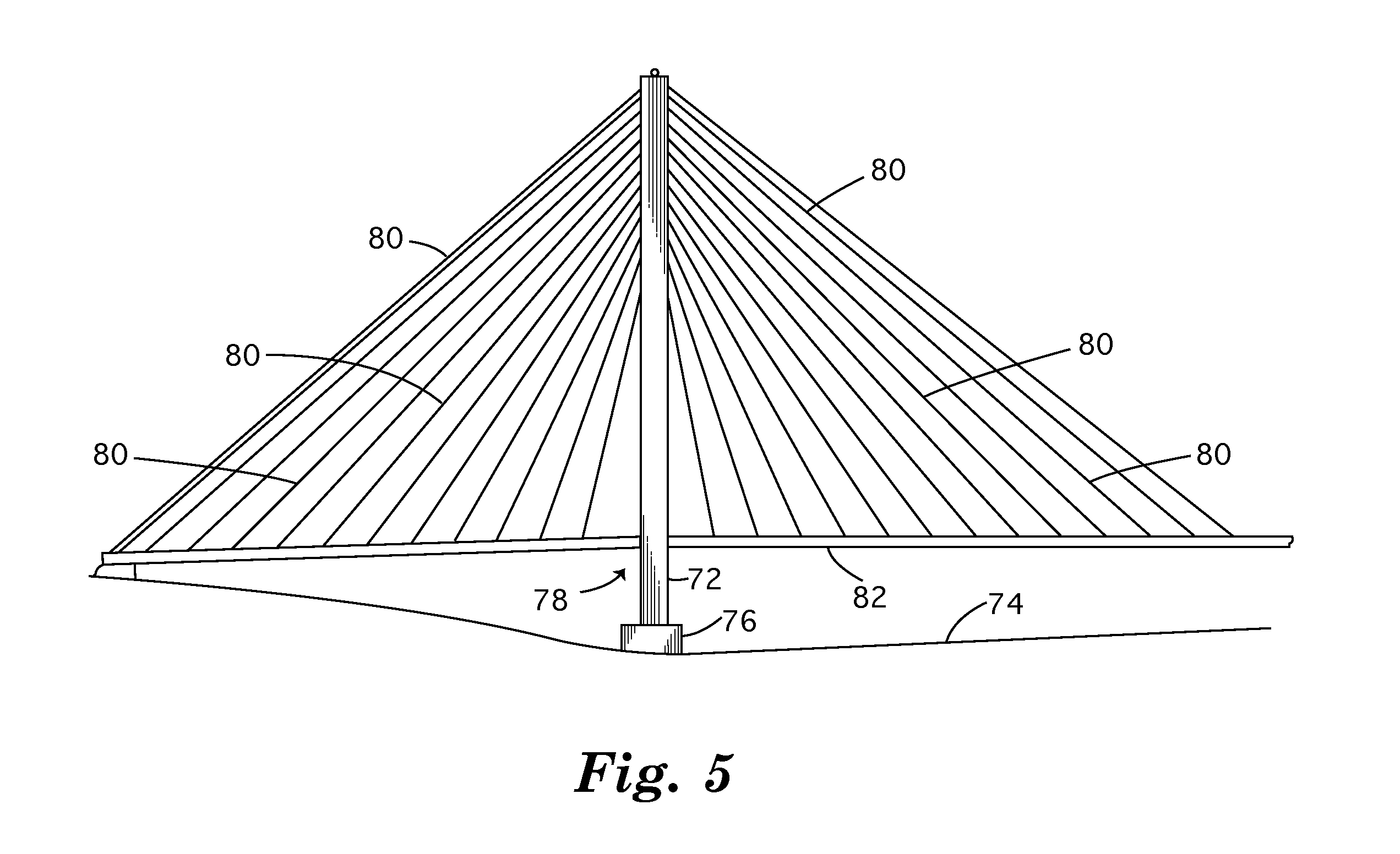Method for treating elongate metal tension member with volatile corrosion inhibitors
a technology of elongate metal tension member and volatile corrosion inhibitor, which is applied in the direction of coatings, building components, structural elements, etc., can solve the problems of vci loss to the outside atmosphere, limited above-mentioned approaches, and the extent of corrosion protection tends to diminish, so as to achieve simple and low cost, enhanced corrosion protection
- Summary
- Abstract
- Description
- Claims
- Application Information
AI Technical Summary
Benefits of technology
Problems solved by technology
Method used
Image
Examples
example 1
[0058]
ConstituentPercent by WeightCyclohexylammonium Benzoate87Monoethanolammonium Benzoate10Amorphous Silica3
example 2
[0059]
ConstituentPercent by WeightCyclohexylammonium Benzoate60Monoethanolammonium Benzoate20Dicyclohexcyl Ammonium Nitrate20
example 3
[0060]
ConstituentPercent by WeightCyclohexylammonium Benzoate55Monethanolammonium Benzoate20Dicyclohexcyl Ammonium Nitrate20Benzotriazole5
[0061]It is advantageous that the inhibitor materials are supplied as dry powders. The powders are preferably enclosed in a porous bag or pouch, to facilitate easy handling. Different VCI agents typically have different equilibrium vapor pressures resulting in different rates of volitization at a given set of conditions. Thus, a blend of VCI agents may be advantageous in providing fast initial distribution of vapor phase corrosion inhibitor into the vapor stream as well as assuring ongoing VCI emissions. For example, more VCI enters the vapor phase in a given amount of time for a material with a “higher” equilibrium vapor pressure (e.g. >1×10−4 mm Hg), in comparison to a VCI with a “lower” equilibrium vapor pressure. The “higher” equilibrium vapor pressure VCI material is therefore deemed to provide “fast” volitization and corrosion protection. In...
PUM
| Property | Measurement | Unit |
|---|---|---|
| humidity | aaaaa | aaaaa |
| humidity | aaaaa | aaaaa |
| pressure | aaaaa | aaaaa |
Abstract
Description
Claims
Application Information
 Login to View More
Login to View More - R&D
- Intellectual Property
- Life Sciences
- Materials
- Tech Scout
- Unparalleled Data Quality
- Higher Quality Content
- 60% Fewer Hallucinations
Browse by: Latest US Patents, China's latest patents, Technical Efficacy Thesaurus, Application Domain, Technology Topic, Popular Technical Reports.
© 2025 PatSnap. All rights reserved.Legal|Privacy policy|Modern Slavery Act Transparency Statement|Sitemap|About US| Contact US: help@patsnap.com



